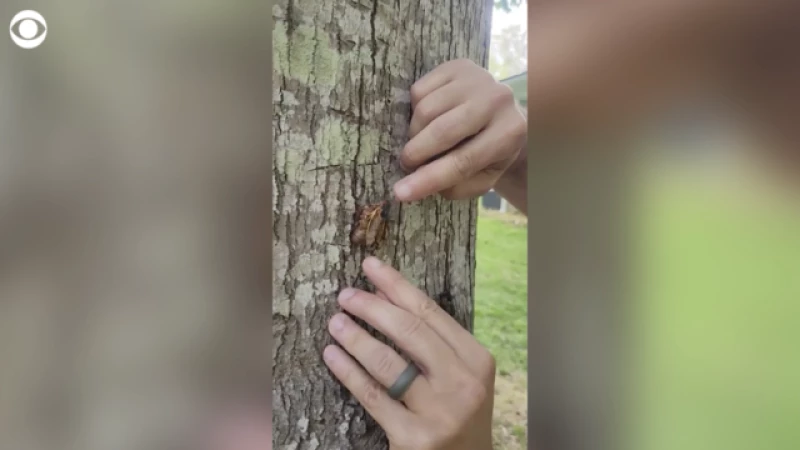Cicadas are making a grand return in the U.S. this year, emerging by the trillions as the soil temperature hits a precise 64 degrees. Some regions have already witnessed their arrival.
What to Expect in 2024's Cicada Emergence?
This year, two cicada broods are emerging simultaneously, promising a larger cicada population than usual.
Brood XIX, appearing every 13 years, will emerge in the Southeastern states like Kentucky, Missouri, Arkansas, Tennessee, Mississippi, Alabama, Georgia, South Carolina, North Carolina, and Virginia.
Brood XIII, with a 17-year cycle, will be prevalent in the Midwest, particularly in Illinois and Iowa.
Cicadas spend most of their lives underground, only to emerge, take flight, molt, mate, and eventually perish at the end of their 13 or 17-year cycle. Their offspring then drop to the ground, burrow into the soil, and await their own future emergence.
As the temperature of the soil reaches 64 degrees, cicadas emerge at the end of their cycle, typically in May or June. Some states experience warmer temperatures earlier, leading to cicadas emerging sooner. Videos have captured cicadas already emerging near the Georgia-South Carolina border, with thousands filling the air with their buzzing sound. In Illinois, a convergence of Brood XIX and Brood XIII is expected this year, with sightings of nymphs in Champaign. These insects, often mistaken for locusts, feed on small branches without causing harm to trees.
In Durham, North Carolina, Marie Gruss Sherr shared videos of cicadas, many of them perched on plants. Unlike locusts, cicadas do not eat plants but rather derive their nutrients from small branches. This distinction means that most trees will not be negatively impacted by the emergence of cicadas.
In a region near Lake Oconee, Georgia, a cicada observer captured the continuous buzzing noise produced by the insects as they emerge.
Male cicadas generate a loud humming sound to attract female cicadas, who respond by fluttering their wings to indicate their readiness to mate.
Recently, the volume of cicada noise was so intense that perplexed locals in Newberry County, South Carolina actually reached out to the sheriff's department to inquire about a "strange noise in the air resembling a siren, whine, or roar." The department reassured residents that it was simply male cicadas attempting to find a mate.
What is the lifespan of cicadas?
Upon emerging from their lengthy 13 or 17-year dormancy underground, cicadas have a relatively brief life span. Approximately five days post-emergence, they begin mating, with the female cicadas laying their eggs in woody plants using their ovipositor. They deposit around 10-20 eggs into branches and can lay 500 to 600 eggs in a single season, as per Johnson.
The eggs typically hatch about six weeks after being laid, while the adult cicadas perish shortly after the mating phase, surviving only about a month above ground.







